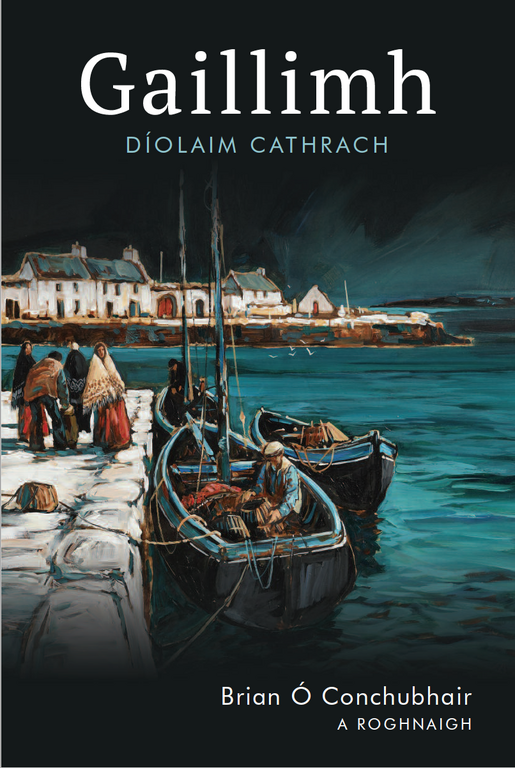
A new book by Faculty Fellow Brian Ó Conchubhair celebrates the west-coast city of Galway and its naming as a 2020 European Capital of Culture.
Gaillimh: Díolaim Cathrach (Cló Iar-Chonnacht) is an anthology of over 400 pages containing poems, short stories, and extracts from novels that feature Galway. They range in time from the Middle Ages through the Famine, the War of Independence, the Free State, urbanization, and up to the present day. In all, the book contains 70 selections with introductory notes on over 40 writers—some of whom are established literary figures (Máirtín Ó Cadhain, Breandán Ó hEithir, Liam Ó Flaithearta, and Caitlín Uí Thallamhain) and others contemporary and emerging voices (Alex Hijmains, Áine Durkan, Máire Holmes, Ailbhe Ní Ghearbhuigh, and Caitríona Ní Chléiricín).
The book was three years in the making, explains Professor Ó Conchubhair, and involved combing poetry collections, magazines, short story collections, and novels to locate texts that captured specific places and historical moments in Galway.
“What jumps out from the collection,” he says, “is how the city’s long history of commerce, strangers, wars, and violence infuses and informs the contemporary streetscape; how the modern bustling city retains cultural memories and traces, and how, in turn, those features trigger associations for writers, such the street markets, the churches, the river, canals, statues, and monuments.

“My purpose in the anthology of prose and poetry was to provide an overview of how poets and writers interpreted, imagined, and understood Galway City—its famous characters and landmark buildings, as well as its walls, churches, food markets, lanes, and streets. Within these writings the reader finds the statue of Pádraic Ó Conaire, Eyre Square, the Spanish Arch, the Claddagh, Renmore, Newcastle, Knocknacara, Ballybrit, Nun's Island, The Long Walk, Claddagh Church, High Street, Dominick Street, Middle Street, Quay Street, Shop Street, Augustine Street, Saint Francis Street, Cross Street, Woodquay, Salmon Weir Bridge, Lough Atalia Bridge, Moneenageisha, and many other landmarks.”
"The Irish-language and Irish-language literature is a central facet of Galway City’s history, heritage, and identity. Galway was and remains the capital of Irish-speaking Ireland and the most likely urban setting in which to hear native-speakers conversing in their first language. Galway is also home to Taibhdhearc na Gaeilge, the National Irish-language theatre. Douglas Hyde, Ireland’s first president (he visited Notre Dame in 1906), remarked that Galway ‘brings us, as no other city can, into touch with the history of our native land.’"
Galway had planned an elaborate schedule of events and exhibitions to celebrate its year as the European Capital of Culture—an initiative designed to highlight the richness and diversity of cultures in Europe; celebrate the cultural features Europeans share; increase European citizens' sense of belonging to a common cultural area; and foster the contribution of culture to the development of cities.
While the pandemic forced the cancellation of some events and the move to virtual for others, the Galway book came out as planned, with Professor Gearóid Denvir launching it at a virtual event as part of the recent Oireachtas na Gaeilge cultural festival.
Read more:
Professor Denvir’s comments are available here.
Áine Ní Ghlinn, Laureate na nÓg, reviewed the book for RTÉ:
Listen to the RTÉ broadcast on the book
Originally published by at irishstudies.nd.edu on November 30, 2020.